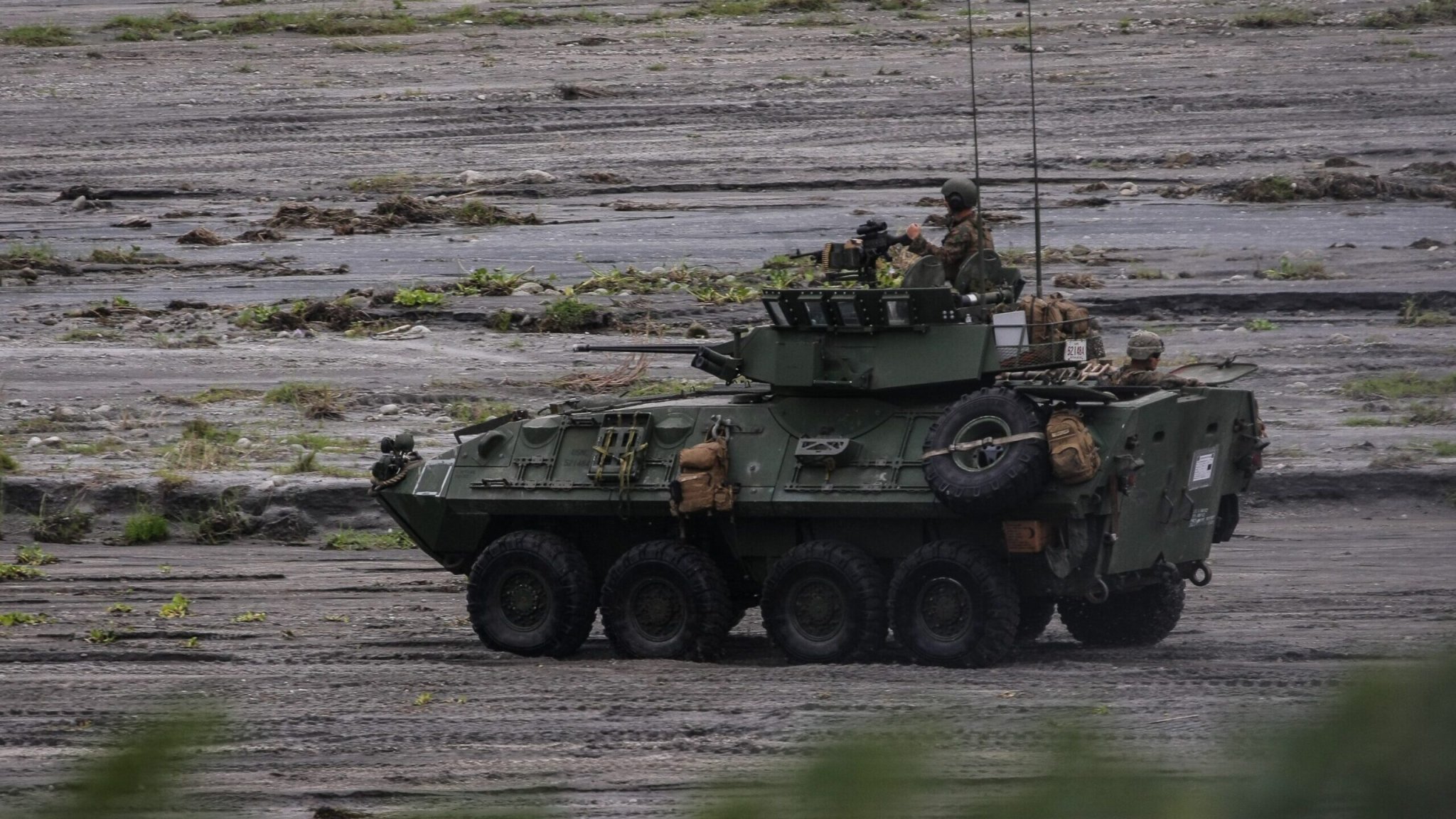

Light, fast and lethal is what the Marine Corps expects from its light armored reconnaissance battalions, and on Monday it put forward what it expects from the next generations of combat vehicles.
In a Request For Information published Monday, the Marine Corps said it wants its new Advanced Reconnaissance Vehicle (ARV) to include munitions upgrades, electronic warfare capabilities and perform some long-neglected missions including air defense.
That includes a cannon with programmable air burst munitions that can explode over the enemy’s head, Javelin and Spike II missiles, and sensors capable of detecting aerial drone threats.
The ARV is to be the successor to the LAV-25, a light armored reconnaissance vehicle that’s been in service since 1983. Armed with a 25mm chain gun and capable of transporting six Marines, the LAV-25 has been a mainstay of the Marine Corps’ light armored reconnaissance battalions and part of tactical theory adopted in the 1980s that emphasized, “outmaneuvering over firepower to win battles,” according to The National Interest.

The request for the new vehicle lays out six potential variants of the vehicles: “The ARV FoVs is expected to consist of six (6) Mission Role Variants (MRVs): Command, Control, Communications, & Computers-Unmanned Aerial System (C4-UAS), Organic Precision Fire-Mounted (OPF-M), Counter Unmanned Aerial Systems (CUAS), 30mm Autocannon and Anti-Tank Guided Missile (ATGM), Logistics (LOG), and Recovery (R). The planned Acquisition Objective (AO) for the ARV is 533 units over five production years allocated to the following MRVs.”
In other words, command and control over the battlefield, direct fire, counter-armor abilities, air defense, logistics and recovery. Control over UAVs and upgrades to weaponry include loitering munitions that can launch and fly around, just waiting for a target to appear.
In July, the Marine Corps announced it had chosen Textron Systems and General Dynamics Land Systems to begin developing prototypes of the vehicle. Prototypes are expected to be delivered in the first quarter of fiscal year 2023, at which point the Marine Corps will begin evaluations and testing. A contract for equipping Marine Corps units could be worth an estimated $1.8 billion to 6.8 billion over five years, according to the Congressional Research Service.
“A key Fleet Marine Force modernization initiative, the ARV Command, Control, Communications and Computers/Unmanned Aerial Systems will host a suite of C4 equipment, sensors, and operate both tethered and untethered UAS,” read a Marine Corps statement released that month.
The upgrades to the Marine Corps’ fleet of reconnaissance vehicles come as the service is in transition, moving to new missions and looking for new capabilities. In March 2020, the Marine Corps released “Force Design 2030,” its vision for the future of the service. That includes the elimination of the Corps’ tank battalions, standing up Marine Littoral Regiments and a general shift away from fighting out of austere forward operating bases towards countering threats in the Pacific and other near-peer forces.
With almost 40 years of service, the LAV-25 is itself one of the oldest vehicles in the Marine Corps inventory. And, while there have been upgrades and add-ons over the years, its performance on water has been hindered and it has become the most accident-prone vehicle in the Marine Corps, according to an analysis from the Government Accountability Office.
Read more on Task & Purpose
- The Air Force fired a commander who separated an airman recovering from a suicide attempt
- Tulsi Gabbard posted a video in uniform accusing ‘self-serving’ politicians of wanting to start World War III
- A Marine captain argues: the Corps has a ‘participation award’ problem
- This video captures the ‘oh sh-t’ moment of an Army paratrooper’s reserve parachute opening at the last possible second
- Here’s why military officers are commanding fewer enlisted troops than ever before
Want to write for Task & Purpose? Click here. Or check out the latest stories on our homepage.
